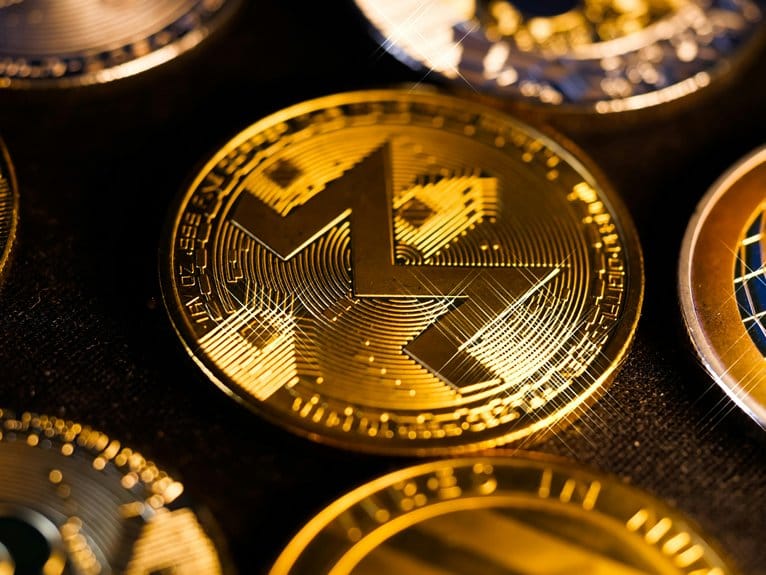DePIN networks merge blockchain technology with physical infrastructure to create decentralized systems for managing real-world assets and services. These networks utilize smart contracts, tokenization, and consensus mechanisms to coordinate resource sharing across telecommunications, IoT, energy, and computing sectors. Key projects like Helium and Filecoin demonstrate successful implementations, with market projections exceeding $50 billion by 2025. The architecture combines hardware nodes, data oracles, and token economics to incentivize participation while reducing infrastructure costs by 30-40%. Core components include physical infrastructure layers, protocol management, and user applications, forming an ecosystem that's transforming traditional infrastructure models.
What Are DePIN Networks
DePIN (Decentralized Physical Infrastructure Networks) stand at the intersection of blockchain technology and real-world infrastructure, connecting physical assets and services to decentralized networks.
These systems leverage blockchain technology to create distributed networks that manage and operate physical infrastructure, ranging from telecommunications and IoT devices to energy grids and computing resources.
At their core, DePIN networks function through a combination of smart contracts, tokenization mechanisms, and decentralized governance protocols. Participants in these networks contribute physical resources or services and receive cryptocurrency tokens as compensation.
This economic model incentivizes the growth and maintenance of decentralized infrastructure while ensuring network reliability and service quality.
The architecture of DePIN networks typically consists of three primary layers: the physical infrastructure layer containing hardware and equipment, the protocol layer managing network operations and token economics, and the application layer enabling user interactions and service delivery.
This structure allows for seamless integration between traditional physical infrastructure and blockchain-based systems, creating a hybrid framework that combines the benefits of decentralization with tangible real-world utility and functionality.
Core Components of DePIN Systems
Fundamentally, decentralized physical infrastructure networks consist of five core components that work in concert to enable their functionality: hardware nodes that provide physical services, consensus mechanisms that validate network operations, token economics that incentivize participation, smart contracts that automate governance, and data oracles that bridge on-chain and off-chain information flows.
The decentralized architecture relies heavily on robust node management systems that coordinate network resources while maintaining security protocols across distributed endpoints. These nodes interact through standardized data sharing mechanisms, ensuring seamless integration of physical infrastructure with blockchain networks.
Incentive mechanisms drive user engagement by rewarding network participants who contribute resources or validate operations. Governance models implemented through smart contracts establish clear protocols for decision-making and network upgrades, while addressing scalability challenges inherent in distributed systems.
The integration of secure data oracles ensures accurate information flow between physical infrastructure and blockchain layers, maintaining network integrity. This interconnected system creates a self-sustaining ecosystem where each component reinforces the network's reliability, security, and operational efficiency while promoting continuous growth through aligned stakeholder interests.
Popular DePIN Projects Today
Several prominent DePIN projects have emerged in recent years, demonstrating the practical applications of decentralized infrastructure across diverse sectors.
The Helium Network stands out by creating a decentralized wireless infrastructure for IoT devices, utilizing a proof-of-coverage consensus mechanism and rewarding node operators with HNT tokens.
Filecoin Storage has established itself as a leading decentralized storage network, enabling users to rent out excess storage capacity while maintaining data integrity through cryptographic proofs.
Energy Web has pioneered decentralized solutions for the energy sector, facilitating peer-to-peer energy trading and grid management through blockchain technology.
In the realm of sensor networks, projects like WeatherFlow are deploying decentralized weather stations, while civic technologies platforms are implementing blockchain-based voting and identity verification systems.
Decentralized oracles, such as Chainlink's network, serve as critical infrastructure by connecting DePIN networks with real-world data and external systems.
These projects showcase the versatility of DePIN implementations, from telecommunications and data storage to energy distribution and civic services, establishing new paradigms for infrastructure deployment and management in the Web3 ecosystem.
DePIN Investment Opportunities
The investment landscape for decentralized physical infrastructure networks offers diverse opportunities across multiple entry points, from direct token investments to infrastructure participation.
DePIN market trends indicate significant growth potential, with projections showing expansion across wireless networks, IoT sensors, and computing resources. Investors can capitalize on this growth through strategic token acquisitions, node operation, or direct infrastructure deployment.
Primary DePIN investment strategies include token staking, which provides governance rights and passive income streams, and active network participation through hardware deployment.
Institutional investors are increasingly focusing on DePIN projects that demonstrate strong network effects and sustainable tokenomics models. Notable opportunities exist in sectors like decentralized wireless networks, where early investors can secure network positions before mass adoption.
Risk mitigation in DePIN investments often involves portfolio diversification across different infrastructure types and geographic regions.
The sector's correlation with both crypto markets and traditional infrastructure investments creates unique hedging opportunities. Market analysis suggests that projects with clear utility, established partnerships, and scalable infrastructure models typically offer the most promising return potential.
Future Impact on Infrastructure
As DePIN networks continue to mature, their transformative effects on traditional infrastructure systems are becoming increasingly apparent. These decentralized networks are poised to revolutionize how we develop, maintain, and interact with physical infrastructure, driven by technological advancements in blockchain and IoT integration.
The scalability challenges faced by current DePIN implementations are being addressed through innovative governance models and improved consensus mechanisms. Studies indicate that DePIN networks can reduce infrastructure maintenance costs by 30-40% while delivering significant sustainability benefits through optimized resource allocation.
However, interoperability issues between different DePIN protocols remain a crucial hurdle to overcome.
Looking ahead, regulatory considerations will play a pivotal role in DePIN adoption, particularly regarding data privacy and infrastructure security standards. The economic implications are substantial, with projected market growth exceeding $50 billion by 2025.
Success will largely depend on community engagement and the development of robust incentive structures. As these networks evolve, they're expected to enable more efficient, transparent, and resilient infrastructure systems, though careful attention must be paid to ensuring equitable access and preventing technological fragmentation.
Frequently Asked Questions
How Do Depin Networks Handle Data Privacy and User Information Protection?
DePIN networks implement robust data encryption protocols and user anonymity mechanisms through cryptographic methods, zero-knowledge proofs, and decentralized storage systems to safeguard sensitive information across distributed infrastructure nodes.
What Happens if Physical Infrastructure Components in Depin Networks Malfunction?
DePIN networks implement infrastructure redundancy protocols to maintain service continuity during malfunctions. Automated fault detection systems trigger component repair processes while redundant nodes ensure uninterrupted network operations.
Can Depin Tokens Be Staked Across Different Infrastructure Networks?
Multi network staking across DePIN networks depends on token interoperability protocols and cross-chain bridges. Some platforms enable collaborative staking mechanisms, though technical limitations often restrict full cross-network token deployment.
How Do Regulatory Changes Affect Depin Network Operations Across Different Countries?
Regulatory compliance requirements create operational challenges for DePIN networks, as international variations in legal frameworks necessitate adaptable protocols and region-specific implementation strategies to maintain network functionality across jurisdictions.
What Role Do Traditional Infrastructure Companies Play in Depin Development?
Traditional infrastructure companies facilitate DePIN growth through strategic partnerships, technical expertise integration, and direct investment strategies, enabling hybrid models that combine established physical networks with decentralized protocols.
Conclusion
Decentralized Physical Infrastructure Networks (DePIN) represent a transformative convergence of blockchain technology and real-world infrastructure deployment. Through tokenized incentive mechanisms, data verification protocols, and distributed governance frameworks, DePIN networks demonstrate significant potential to revolutionize sectors from telecommunications to energy grids. The continued evolution of these systems, coupled with growing institutional adoption, positions DePIN as a critical component in the future development of sustainable, efficient infrastructure solutions.





